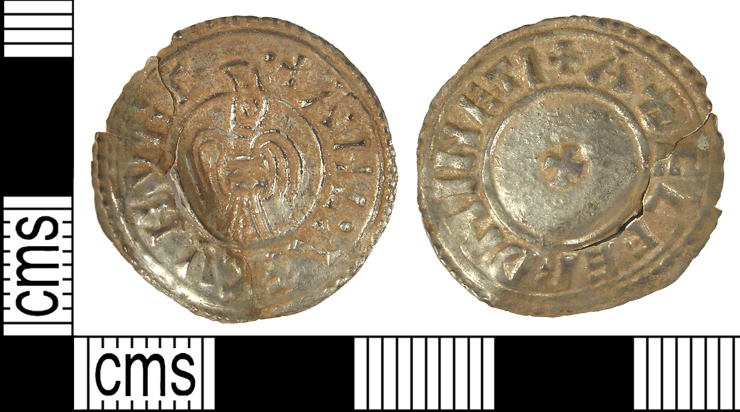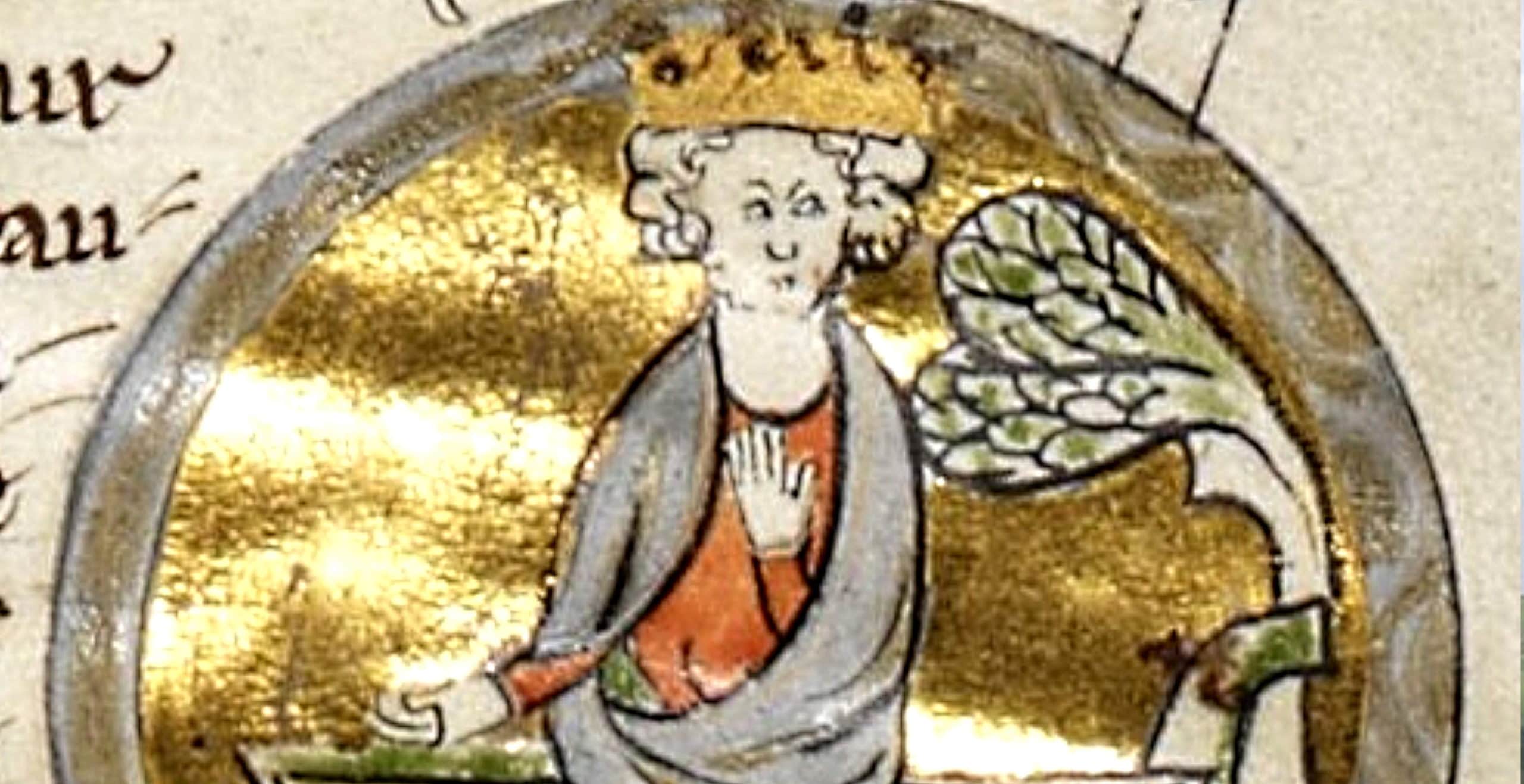Following in the footsteps of his older half-brother, King Athelstan, Edmund was bound for the role of king when his brother passed away leaving the eighteen-year-old to take up the helm and oversee this now vast and sprawling Anglo-Saxon kingdom.
Whilst he was still only in his youth, he had the benefit of military experience, the most significant of which was his involvement in the Battle of Brunanburh, where he had fought alongside Athelstan and succeeded in suppressing the rebel Scottish and Viking forces.

Edmund however was now faced with an even greater challenge, to hold onto the power which his brother had consolidated and retain the position of being the overlord king ruling over England.
Such a mammoth task was not without its challenges, as various pockets of rebellion could disturb the fragile balance of power within the kingdom.
The first to launch such a challenge to King Edmund’s supremacy was Olaf Guthfrithson, the Viking King of Dublin who took Athelstan’s death as an opportunity to take back the city of York with the help of Wulfstan, the Archbishop of York. Not only content with capturing York, Guthfrithson extended Viking rule by invading north-east Mercia and went on to storm Tamworth.
In response, Edmund amassed his army, which met the Viking king’s forces at Leicester as he journeyed back to the north. Fortunately, intervention by the Archbishop Wulfstan and the Archbishop of Canterbury prevented military engagement and rather settled the differences between the two leaders via a treaty.
Such a treaty proved to be a major setback for King Edmund, who was forced to cede the Five Boroughs of Lincoln, Leicester, Nottingham, Stamford and Derby to the Viking leader, Guthfrithson. Such a reversal of fortunes would have been not only a military hurdle but also a demoralising blow for Edmund who wanted to preserve the dominance which had been secured by his older brother.
However not all hope was lost, as part of the treaty also included the caveat that when the first of the two leaders should die, the survivor would go on to inherit the entire country and thus become King of England.
For the time being however, Olaf remained in control of northern possessions and proceeded to have Viking coins made in York.

That being said, fortunately for Edmund this major setback to his family’s dynasty proved to be temporary, as Olaf passed away not long afterwards in 941, Edmund was able to take back the Five Boroughs.
His reclamation of territory proved to be a significant moment that was celebrated with a poem documented in the Anglo-Saxon Chronicle.
By 944, King Edmund had now recalibrated and recaptured the territory which had been lost at the start of his reign and thus regained control of England. Whilst the Viking threat had been suppressed with his expulsion of its leaders from York he, like his brother before him, would pass on a kingdom still facing the challenges which the Vikings continued to pose to the Saxon kingdom.
Edmund had to keep a watchful eye on all of his possessions, as he was not only maintaining supremacy in England as threats of Viking alliances both in Wales and Scotland could prove to be a risk to his kingship.
In Wales, Edmund was initially threatened by Idwal Foel, King of Gwynedd who wanted to take up arms against him: however in 942 he died in battle against Edmund’s men. Fortunately for Edmund, Hywel Dda’s takeover marked a period of more stability, as he had allied himself with the English Crown in order to gain more power for himself in Wales. As a result, Edmund could maintain his position as overlord of the kings of Wales.
Further north however, Strathclyde appeared to form an alliance with the Vikings, with its leader, Dunmail having supported King Olaf. In response Edmund marched his forces, which were comprised of both English and Welsh fighters, into Stratchclyde and conquered it. Not long afterwards, the area was ceded to King Malcolm I of Scotland as part of a peace treaty which also ensured military support.

Meanwhile, Dunmail was killed on the battlefield and thus Cumbria became absorbed by the Scottish throne.
With relations in the British Isles reaching some kind of balance and stability ensured by recapturing the five lost boroughs, Edmund also found time to maintain good relations with his neighbours in Europe.
Further afield, Edmund’s contacts with his counterparts in Europe were further strengthened by his sisters’ marriages to members of royalty and nobility on the continent. These connections included his nephew, King Louis IV of France who was the son of Edmund’s half-sister Eadgifu and her husband Charles the Simple of France, whilst Edmund’s other brother-in-law was Otto I, King of East Francia.
Edmund would subsequently play a valuable role in restoring his nephew to the French throne, after Louis had requested the assistance of his uncle when he was threatened by the Danish Prince Harald.
Harald later handed Louis over to Hugh the Great, Duke of the Franks who held him prisoner, forcing both Edmund and Otto to intervene.
Louis’s mother Eadgifu had contacted both her brother and brother-in-law to ask them for help in securing Louis’s release. Edmund in response sent messengers threatening Hugh, which would lead to an agreement forcing the release of Louis and his restoration as King of France.
Meanwhile back in England, Edmund sought to continue much of the administrative, legal and educational legacy which his brother, Athelstan had left behind. This included the revival of Latin as well as a notable increase in Welsh book production, leading to a flourishing of academic activity under Edmund’s rule.
Moreover the English Benedictine Reform, the major religious force, made strides during his kingship. On his way to visit Scotland, Edmund notably visited the shrine of St Cuthbert and gave gifts as a show of respect. In addition, at this time there were more women from aristocratic backgrounds turning to a life dedicated to religion: this included Wynflaed, the mother of Edmund’s first wife.
In his private life, Edmund married twice; firstly to Aelgifu of Shaftesbury, with whom he had three children, two boys and a girl. The two sons, Eadwig and Edgar were destined to inherit the throne, although upon his death they were too young to inherit and he would thus be succeeded by his younger brother Eadred.
Much of Edmund’s short rule was taken up by the Viking threat which continued to dominate the rule of subsequent kings.

During his six years as monarch, Edmund did his upmost to maintain the territorial, diplomatic and administrative legacy left behind by his brother.
Sadly his efforts were to be curtailed when, on the Feast of St Augustine in May 946 he was stabbed to death in a brawl at Pucklechurch in Gloucester.
With his reign tragically cut short and his sons too young to inherit, the throne passed to his younger brother Eadred, another Anglo-Saxon king who, like his brother’s before him would devote himself to defending and expanding his Saxon lands against the Viking heathen force.
Jessica Brain is a freelance writer specialising in history. Based in Kent and a lover of all things historical.
Published: 10th April 2022





